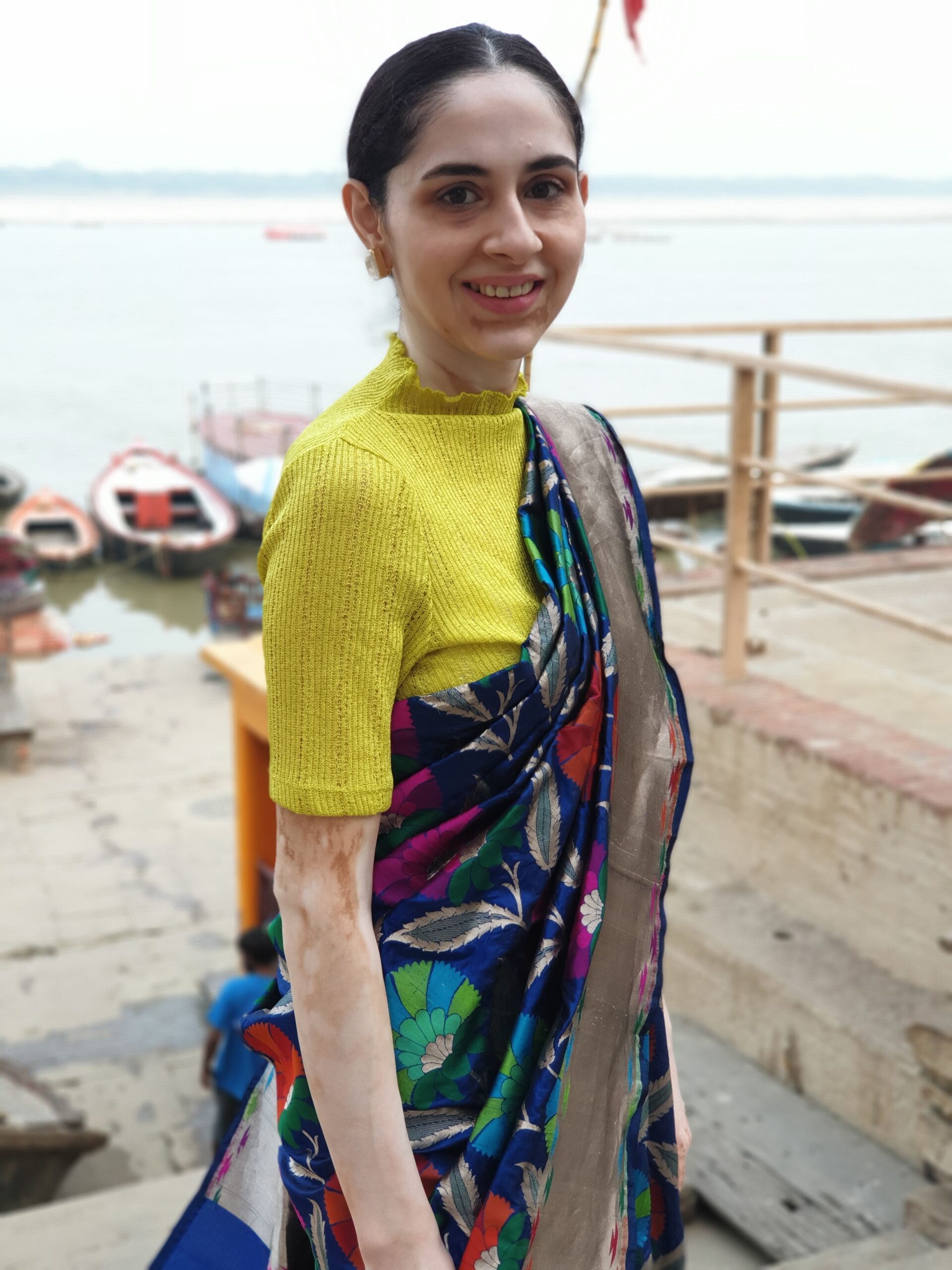Banarasi saree is a saree made in the ancient city of Varanasi in Uttar Pradesh. The sarees are among the finest sarees in India and are known for their gold and silver brocade or zari, fine silk and rich embroidery.
Depending on the intricacy of its designs and patterns, a saree can take from 15 days to a month and sometimes up to six months to complete.
The Banarasi saree is a must-have in the wardrobe. And that’s why I wanted to get one while I was in Varanasi. I managed to find this beautiful silk saree with mina work. It took the weaver about a month to make this beauty. It cost me Rs. 20,000 ($273).

But it wasn’t that easy. When I headed out to the markets, I was spoilt for choice. However, soon I found out that 95% of those sarees were fake! They are machine-made using artificial plastic fibre that is imported from China.
What’s worse is that they’re overpriced too. So not just the genuine local artisans are running into losses, but the tourists are getting ripped off as well.
So, I decided to meet the local weavers and get them to help me find a real silk saree. As I approached their colony through the busy, narrow lanes of the ancient city, I could hear the noise of the wooden handlooms.
After showing me the process of hand-weaving the silk sarees, they were kind enough to explain the difference between the three types of sarees available to buy:
- 100% Silk saree
- Art silk saree (60% silk + 40% viscose). Viscose is a semi-synthetic fibre.
- 100% fake saree made of synthetic fibres
How to Tell the Difference Between Pure & Synthetic Saris
1. Pin marks
Since 100% silk sarees can only be made on a traditional handloom, they always tend to have pin marks on the selvedge of the saree. They are found on the saree because the saree is fixed to the loom using pins. While there are no such marks on the fake saree.

2. Direction of the weaving pattern
Check the design pattern on the back of the saree. The direction of threads of the design in the Silk saree and Art silk will be vertical (breadth-wise). While the direction of design threads will be horizontal (length-wise) in the synthetic saree.


3. Burn test
Request the shopkeeper for a burn test. On burning silk thread, it smells like burnt hair, and when you touch the burnt thread, it feels like ash and can be crushed easily. While the synthetic thread smells and clumps up like plastic.
Beware of fake burn test that some shopkeepers may trick you with. Don’t let them tell you it curls or twists or dances on burning.
How much do Sarees cost in India?
The retail price of 100% silk sarees starts from ₹10,000 ($136). Art silk saree starts from ₹6500 ($89) while a synthetic saree should be priced around ₹2000 ($27).
Should you trust ID cards?
Some shopkeepers pull out their ID cards claiming that they were given to them by the Government of India. I was told that while most of them are fake, even if they do have a real one, it is not a sure shot guarantee that all their sarees are made of 100% silk. They sell all types of sarees.
Are the sarees made of real gold and silver threads?
Interestingly, the Banarasi sarees in the ancient times were made with threads coated with real gold and silver. But that was when they were made for the royalty.
Today, there are very, very few weavers who take customised orders from fashion designers to make such sarees for celebrities. So, if a shopkeeper tells you the saree has been made using precious metals, walk out of the store!
So, if you’re heading out to buy a saree in Varanasi, do your research and buy authentic products. Not only you will treasure these six yards of elegance for a lifetime, but by doing so, you’ll be supporting the genuine local artisans, but will be making an effort towards helping this wonderful art form survive.



